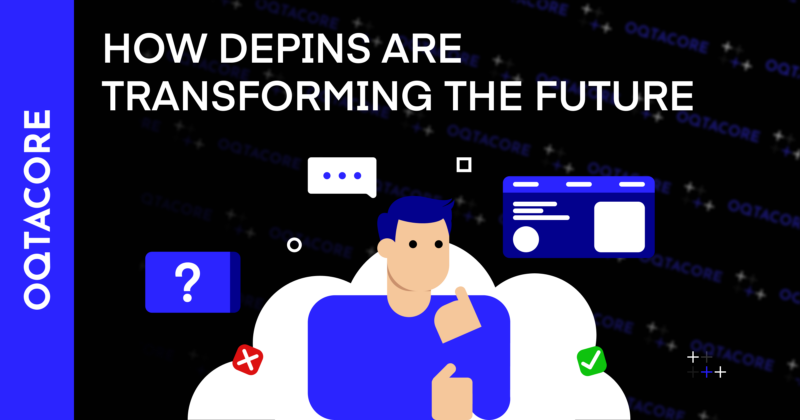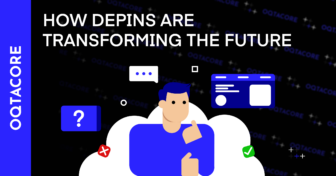
Explore how decentralized physical networks are redefining connectivity, efficiency, and innovation.
Introduction
Decentralized Physical Infrastructure Networks (DePIN) are revolutionizing industries by merging blockchain, real-world assets, and user-driven infrastructure. Unlike traditional infrastructure, which relies on centralized corporations or governments, DePIN leverages crypto incentives to build, operate, and maintain physical infrastructure in a decentralized way.
From wireless networks and cloud computing to AI-powered sensors and decentralized energy grids, DePIN is reshaping connectivity, computing, mobility, and finance. But how does it work, and what are its real-world applications?
This guide explores what DePIN is, how it works, major projects leading the charge, and how it will change the way we live and work.
What is DePIN?
Definition
DePIN (Decentralized Physical Infrastructure Networks) refers to blockchain-powered networks where individuals, businesses, and communities contribute and manage real-world infrastructure.
Read about: How will DePIN change our lives?
Unlike centralized infrastructure controlled by corporations or governments, DePIN allows anyone to participate by contributing hardware, computing power, energy, or bandwidth in exchange for crypto rewards.
How DePIN Works
- Participants provide infrastructure – This could be hotspots, cloud storage, computing power, or energy sources.
- Users access services – Other users utilize this decentralized infrastructure (e.g., accessing a wireless network).
- Crypto rewards incentivize participation – Contributors receive tokens for running nodes, hosting data, or providing network coverage.
– Removes central control – Power is distributed among users.
– Reduces costs – No middlemen, making services more affordable.
– Increases accessibility – Enables global participation in infrastructure development.
How DePIN Will Change Our Lives
DePIN is disrupting traditional infrastructure models across multiple industries, offering cost savings, security, and financial incentives to participants.
1. Decentralized Wireless Networks
Traditional telecom companies control internet and mobile services, often charging high fees and limiting access. DePIN-powered networks allow users to deploy their own wireless nodes and earn tokens by providing connectivity.
– Example: Helium Network – Users set up hotspots and earn HNT tokens by providing wireless coverage.
– Example: Pollen Mobile – A decentralized mobile network built by users.
2. Decentralized Cloud Computing & Storage
Big tech firms like AWS, Google Cloud, and Microsoft Azure dominate cloud computing, leading to high costs and data privacy concerns. DePIN disrupts this by allowing users to share storage and computing power in exchange for crypto rewards.
– Example: Filecoin – A decentralized storage network rewarding users for renting out disk space.
– Example: Akash Network – A cloud computing marketplace offering cheaper, decentralized alternatives to AWS.
3. AI & Decentralized Machine Learning
AI development is resource-intensive, requiring large datasets and computing power. DePIN enables distributed AI model training while rewarding participants for contributing GPU power.
– Example: Render Network – Decentralized GPU rendering for AI and 3D applications.
– Example: Bittensor – Decentralized machine learning incentivizing data contributions.
4. Decentralized Energy & Smart Grids
Traditional energy systems are centralized and inefficient, often leading to high costs and supply issues. DePIN-based energy grids allow individuals to sell excess solar power or battery storage to peers.
– Example: Power Ledger – A blockchain-based platform for peer-to-peer energy trading.
– Example: Sun Exchange – Users fund solar projects and earn passive income.
5. Decentralized Mobility & IoT Networks
DePIN is transforming transportation and IoT by enabling peer-powered networks for self-driving cars, GPS tracking, and delivery logistics.
– Example: DIMO – A decentralized vehicle data network that rewards users for sharing driving data.
– Example: Hivemapper – A decentralized Google Maps alternative where users earn rewards for mapping the world.
Key Benefits of DePIN Over Traditional Infrastructure
| Feature | Traditional Infrastructure | DePIN Infrastructure |
| Ownership | Centralized (controlled by governments & corporations) | Decentralized (owned by users & communities) |
| Costs | Expensive due to intermediaries | Lower costs via peer-to-peer networks |
| Security | Data controlled by central entities | User-controlled encryption & transparency |
| Scalability | Requires large capital & slow expansion | Grows as more users contribute infrastructure |
| Monetization | Users pay without earning back | Users earn crypto rewards for participation |
DePIN offers an open, permissionless way to build infrastructure, shifting control from corporations to communities.
Read about: How to Build High-Performance, Secure & Scalable DeFi Infrastructure
Challenges & Risks in DePIN Adoption
Despite its potential, DePIN faces challenges in adoption, regulation, and scalability.
1. Regulatory Uncertainty
- Governments may impose restrictions on decentralized infrastructure.
- Compliance with data privacy laws (GDPR, CCPA) remains a challenge.
2. Scalability & User Incentives
- Networks require a large number of participants to be effective.
- Economic incentives must be sustainable to maintain long-term growth.
3. Security Risks
- DePIN infrastructure is distributed, making it vulnerable to attacks.
- Smart contract risks can lead to exploits or loss of funds.
However, as DePIN technology matures, projects are finding solutions to enhance security, scalability, and regulatory compliance.
How to Get Involved in DePIN
DePIN is open to anyone, and participation can be highly profitable.
Ways to Participate:
– Run a DePIN Node – Deploy hotspots, storage nodes, or computing power and earn tokens.
– Invest in DePIN Projects – Buy DePIN-related tokens like HNT, FIL, RNDR, or AKT.
– Use DePIN Services – Support decentralized cloud, AI, and telecom solutions.
DePIN is not just about infrastructure – it’s about a decentralized future where users control networks, data, and assets.
Build the Future of Decentralized Infrastructure with OQTACORE
At OQTACORE, we specialize in developing and scaling blockchain-powered DePIN solutions, including:
– Custom DePIN Platforms – Secure and scalable decentralized infrastructure networks.
– Smart Contract Development – Secure Web3 applications for DePIN services.
– IoT & Blockchain Integration – Connecting real-world devices with DeFi and AI.
– Cloud & Edge Computing Solutions – Powering distributed computing networks.
Whether you’re launching a DePIN-powered cloud service, IoT network, or decentralized energy grid, OQTACORE delivers enterprise-grade blockchain solutions for next-generation infrastructure.
Learn more:
